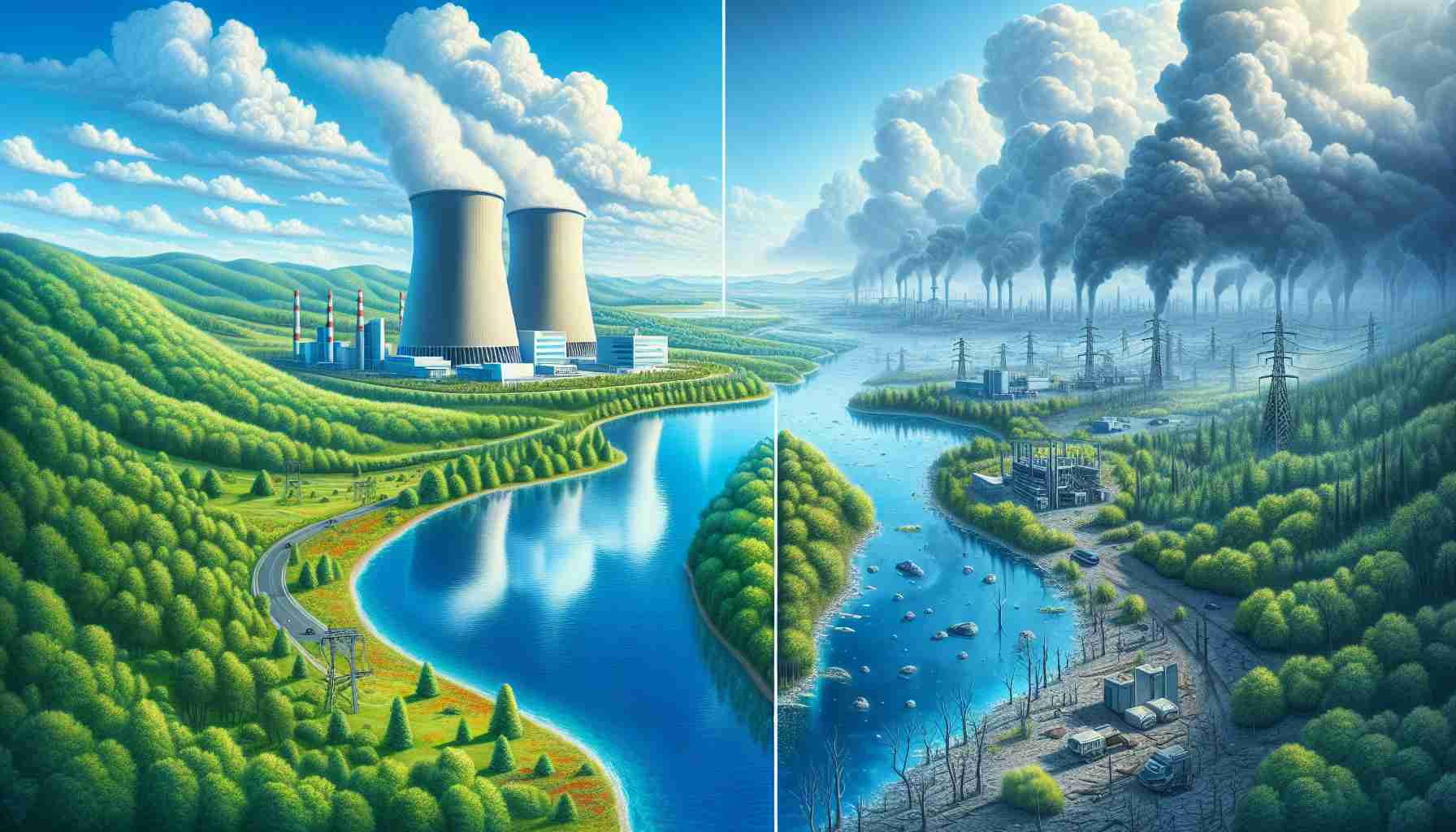As global concern over climate change intensifies, nations are reevaluating their energy strategies, particularly the role of nuclear power. In the United States, officials are optimistic about expanding nuclear capability significantly by 2050, envisaging a tripling of current output. Meanwhile, Japan adopts a more cautious stance after its turbulent history with nuclear energy, particularly marked by the catastrophic Fukushima incident in 2011.
Japanese authorities recently took unprecedented action by deeming the Tsuruga Reactor No. 2 unsafe. Citing its precarious position over multiple fault lines, the Nuclear Regulation Authority halted the reactor’s operations after an extensive eight-year examination. Despite this, Japan has plans to enhance its nuclear energy participation as part of its commitment to reaching net-zero carbon emissions by 2050.
In contrast, the U.S. is actively pursuing the potential of nuclear power to combat climate change. The Department of Energy highlighted the importance of nuclear energy, stating that it currently prevents hundreds of millions of tons of carbon emissions annually. To meet future carbon-neutral targets, the U.S. aims to significantly increase its nuclear infrastructure, potentially adding up to 200 gigawatts of new capacity over the coming decades.
With major tech companies investing heavily in this sector, the future of nuclear energy appears to be a focal point for both nations. These investments underscore a critical shift toward sustainable energy solutions, as global industries navigate the complexities of energy demands and environmental responsibilities.
Nuclear Energy: A Tale of Two Nations
As the world grapples with the twin challenges of climate change and energy security, the debate surrounding nuclear energy becomes increasingly pertinent. While the United States and Japan represent two contrasting approaches to nuclear power, understanding their strategies, challenges, and the global landscape of nuclear energy can provide insights into this complex issue.
Key Questions and Answers
1. What drives the nuclear energy policies of the U.S. and Japan?
The U.S. is motivated by a desire for energy independence and the need to significantly reduce carbon emissions. In contrast, Japan’s policy is heavily influenced by public sentiment following the Fukushima disaster, leading to a more cautious approach despite ambitions to integrate nuclear as part of its energy mix.
2. What are the latest technological advancements in nuclear energy?
New reactor designs, such as Small Modular Reactors (SMRs) and advanced Generation IV reactors, promise enhanced safety and efficiency. These technologies are being explored in both nations, potentially enabling safer nuclear power that can better respond to grid demands.
3. How does nuclear energy fit into the larger conversation about renewable sources?
While nuclear energy is not renewable in the traditional sense, it plays a critical role in providing stable, low-carbon power, complementing intermittent renewable sources like solar and wind. This synergy is crucial for achieving consistent energy supplies during fluctuating demand periods.
Challenges and Controversies
Both nations face significant challenges:
– In the U.S., there are concerns over aging infrastructure, high costs of new reactor construction, and unresolved debates about nuclear waste disposal. Critics argue that nuclear energy may divert funds from renewable initiatives.
– In Japan, public opposition to nuclear energy remains a major hurdle. The government has struggled to regain public trust after Fukushima, and ongoing geological concerns about seismic activity restrict the expansion of nuclear facilities.
Advantages and Disadvantages of Nuclear Energy
Advantages:
– Low Carbon Emissions: Nuclear power generates electricity with minimal greenhouse gas emissions, making it an essential component of strategies to combat climate change.
– High Energy Density: Nuclear energy has an exceptionally high energy output compared to fossil fuels, allowing for the generation of large amounts of electricity with a relatively small amount of fuel.
– Reliable Energy Source: Nuclear power can operate continuously for long periods, providing a baseload supply of electricity, unlike solar and wind, which are dependent on weather conditions.
Disadvantages:
– Nuclear Accidents: The risk of catastrophic events, as seen in Chernobyl and Fukushima, raises significant safety concerns.
– Radioactive Waste: The long-term management of nuclear waste remains an unresolved challenge, with no permanent storage solution in place in many countries.
– High Initial Costs: The construction and decommissioning of nuclear plants require significant financial investments, which may deter government and private sector funding, especially in competitive energy markets.
As nations continue to navigate the complex energy landscape, the future of nuclear energy will be shaped by ongoing technological advancements, regulatory frameworks, and public sentiment.
To learn more about nuclear energy developments, visit World Nuclear News for insights and updates on key issues in the global nuclear sector.
The source of the article is from the blog regiozottegem.be
